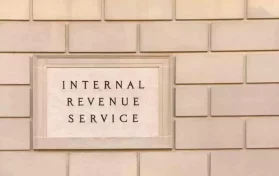
One of the provisions of the American Rescue Plan Act of 2021 dealt with changes to the existing child tax credit. The 2017 Tax Cuts and Jobs Act previously raised the child tax credit (which was originally created in the late 1990s at $500 per eligible child) to $2,000.
The enhanced child tax credit was a part of the third stimulus package. It increased the child tax credit to $3,000 (from 2017’s child tax credit of $2,000) or $3,600 dependent upon the age of the eligible children in the home. Many parents were sent checks in the amount of $300 per eligible child, but, parents could also opt out of these monthly payments and recoup the credit on their tax return in early 2022. The enhanced child tax credit is also fully refundable.
The enhanced child tax credit as it is written in the American Rescue Plan is only applicable for the 2021 tax year. The Build Back Better bill would have made this child tax credit permanent, but, as lawmakers could not come to an agreement regarding President Biden’s spending bill, keeping the enhanced child tax credit past 2021 doesn’t appear to be favorable.
What is the child tax credit?
The Taxpayer Relief Act of 1997 established a $500 child tax credit that was nonrefundable. Eligible families could use this credit to be applied toward their overall federal tax bill. The child tax credit has been greatly expanded over the years (from the original $500 per eligible child to the $2,000 in 2017 under President Trump’s tax cut initiative). However, in 2021, the credit is fully refundable with a maximum amount of $3,600.
How Much is the Child Tax Credit?
Since 2017, the child tax credit has been up to $2,000 per qualifying child. Usually, the term “qualifying child” means a dependent up to the age of seventeen. However, seventeen and eighteen year old dependents and college-age dependents qualified for a $500 credit as well.
It is important to understand the difference between a tax credit and a tax deduction. A tax deduction reduces the overall amount of your taxable income, but a tax credit reduces one’s tax bill dollar for dollar. The $500 that is allocated for older dependents in nonrefundable, but $1,400 of the $2,000 child tax credit is refundable. What does that mean in regards to one’s taxes? Parents are able to receive up to $1,400 per eligible dependent child as a cash refund if the credit exceeds how much they owe in taxes.
The American Rescue Plan Act increased the amount of the child tax credit and made the entire amount refundable for the 2021 tax year only.
Some parents have been getting an advance payment of approximately $300 per month since the latter part of 2021; however, parents could opt out of these payments in favor of receiving their child tax credit in a lump sum when they file their tax return in 2022. The current child tax credit will include children that are seventeen years of age. Children that are ages five years to newborns will qualify for a tax credit of up to $3,600.
The exact amount of the child tax credit that one receives is dependent upon the child’s age at the end of the calendar year.
The American Rescue Plan offered not only the increased child tax credit but other economic boosts for families who have been dealing with the pandemic for two years now. The fact that the credit is fully refundable means more money in parents’ pockets. According to the Center on Poverty and Social Policy at Columbia University, with all the financial assistance present in the ARPA legislation, there is the potential for the 2021 child poverty rate to be cut by fifty percent.
Changes to the Child Tax Credit
The American Rescue Plan Act of 2021 made many changes to the child tax credit first introduced two decades ago. These changes include:
- child tax credits were increase to $3,000 per eligible child between the ages of sic and seventeen; children younger than six will enjoy a $3,600 tax credit
- the child tax credit covers seventeen year olds
- for the first time, parents of eligible children are being sent advance payments beginning in mid-2021
Like many other economic plans voted into law during the pandemic, the chief objective of the enhanced child tax credit is to put money in the pockets of parents as quickly as possible. The advanced payments sent out by the Internal Revenue Service were intended to be equal to half a family’s expected credit, and they were to be sent out each month “or as often as feasible.”
Some parents chose to go to the IRS website, however, and to opt out of these advanced payments.
How will Advance Payments for the Child Tax Credit be Sent?
The IRS was given the purview as to how they could send the child tax payments out to eligible families. Because the American Rescue Plan was part of the third round of stimulus payments, many expected the IRS to use the same payment methods as it had employed for previous stimulus payments.
For most Americans, the IRS direct deposited their stimulus payments into bank accounts. Americans needed to do very little, if anything.
The IRS also sent out checks for many Americans if the agency determined they did not have a bank account in which to directly deposit funds.
Even with the initial stimulus payments, the IRS would use the previous year’s tax information to determine how much of a stimulus payment individuals and families should get and where to deposit the amounts or send a check.
By the time the third round of stimulus payments had been authorized, the federal government had ironed out many of the wrinkles around getting payments out to taxpayers. However, in the event that an expected payment was not received, the IRS offered the assistance of a website where taxpayers could log in to see the status of their payment. This website portal allowed for taxpayers to update their information, and taxpayers who wished to receive their tax credit at the end of the tax year (as a part of their 2021 tax return) could opt out of the monthly payments. The portal was much like the one set up for taxpayers when the first stimulus was approved.
Advanced payments for the enhanced child tax credit began rolling out around July 1, 2021.
By the end of January 2022, families who received these advanced payments will receive a letter from the IRS detailing how much money the family received. Those who opted out should get a letter showing that they chose to wait until tax time to get that child tax credit. The letter families will get in the mail is highly important because when people file their 2021 taxes within the next months, they will have to reconcile any payments received against the credit they are owed. This means that if an eligible family received a certain amount of money over what the child tax credit would cover, they may have to pay that money back to the IRS when 2021 taxes are filed.
Another scenario involves children that turned eighteen at some point in 2021. For example, if a child in an eligible family turned eighteen before December 31, 2021, that child was not eligible for the advanced payments. The portal was designed for parents to be able to update such information so that they did not receive excess advanced payments and have to return that money when taxes are filed in 2022.
Who is Eligible to Claim to the Child Tax Credit?
Income is the greatest factor in who was able to receive the enhanced child tax credit. In fact, AGI (adjusted gross income) is the chief determinant in who received that credit. In order for a family to receive the full child tax credit:
- Single filers may make no more than $200,000 and married couples filing a joint report could make no more than $400,000 in order to receive the $2,000 child tax credit as it was enacted in 2017.
- In order to receive the enhanced child tax credit, single filers could make no more than $75,000. Heads of household could make no more than $112,500. Those who are married, filing a joint return could make no more than $150,000 in order to receive the enhanced credit of $3,000 for children aged six to seventeen and $3,600 for children younger than six years of age.
Where the enhanced child tax credit is concerned, once taxpayers earned more than the $75,000/$112,500/$150,000, for every $1,000 over that amount, payments would be decreased by $50 per one thousand dollars.
In addition, in order to receive the enhanced child tax credit, the eligible child must live with the taxpayer for at least half the year. The eligible child must have a social security number, and the child must rely on the taxpayer for monetary support.
How Can I Claim the Child Tax Credit?
First, in order to claim the child tax credit, taxpayers will have to file a federal tax return during the 2021 tax year (i.e., file taxes in early 2022). Taxpayers will need to be very cautious in reconciling their payments with the credit. Taxpayers will need to look for the letter from the IRS that tells how much they were paid, and they will need to provide this letter to tax preparers in order to prevent a delay in their return being processed.
It is important to show that the child tax credit was claimed correctly. If the IRS determines that a taxpayer claimed the credit incorrectly by “recklessly or intentionally disregarding the rules when filing,” the taxpayer will be banned from claiming the credit for two years. If the credit was issued due to fraud on the part of the taxpayer, the individual cannot claim the credit for ten years.
What if I Forgot to Take the Child Tax Credit Last Year?
Taxpayers who forgot to claim the credit can amend a previous return, but the child in question will need to have a social security number issued by the date of the original return.
Will the Larger Child Tax Credit be Made Permanent?
The enhanced child tax credit as a part of the American Rescue Plan established the larger child tax credit for only one year; however, the Build Back Better bill sought to make it permanent. However, that bill is currently at a stand-still in Congress.
It is always possible that Congress could take this singular provision of the American Rescue Plan and make it permanent, but, as of this writing, there is no indication when or if that could happen.





